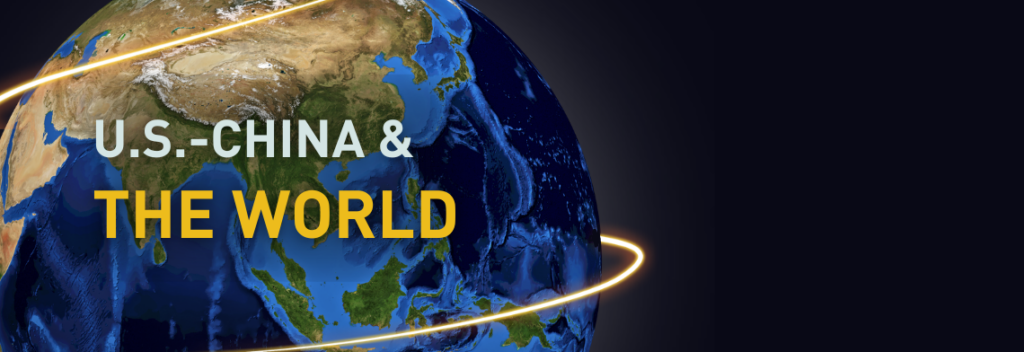U.S.-China & the World is an interview series investigating how the U.S.-China relationship impacts societies, economies, and policies around the globe. Through short interviews with local experts, this series takes a closer look at the issues, countries, and regions impacted by U.S.-China tensions and explores how the United States and China, together, can build a better future for the international community.
Season 2
Season 2 explores global issues and the role and responsibility the United States and China have in facing systemic challenges.
Food Security
Over 2 billion people on the planet experienced food insecurity in 2023, including 18 million households in the United States. How do the United States and China, two of the largest food importers and exporters, contribute to local, regional, and global food security? Sophia Murphy discusses how countries shape the future of global food security.
Water Security
The Mekong River provides millions of people in and beyond Southeast Asia with food, water, and agricultural productivity. How can the United States, China, and Lower Mekong River (LMR) countries work together to keep the Mekong healthy? Brian Eyler explains the global significance of the Mekong River and pressing threats to its health.
Fast Fashion
Each year, the global fashion industry generates more than $4 trillion USD and provides families with affordable clothing options. How are the United States and China involved in the global fashion industry? Sheng Lu discusses how the United States and China can cooperate on issues related to the industry, such as labor rights and environmental sustainability.
Season 1
Season 1 examines the impact of the U.S.-China relationship on specific countries and how they navigate the tension.
Pacific Islands
The Pacific Islands lie in China’s and the United States’ backyards. Graeme Smith explains how the two countries can become better neighbors to the region to better the lives of those living in the Pacific.
Serbia
Serbia-China relations are woven together by free trade agreements and national security. What do Serbians think of the U.S.-China relationship? Stefan Vladisavljev explains how the country can navigate a path between the world’s two greatest superpowers.
Kenya
In the time since Kenya and China normalized relations in 1963, China has become Kenya’s largest trading partner in addition to large economic involvement, such as the Belt and Road Initiative (BRI) and the establishment of Chinese businesses in Kenya. Professor Elijah Munyi explains what Kenya needs to consider when navigating its separate relationships with the United States and China.
Poland
As a NATO member and bordering country of the Russia-Ukraine war, Alijca Bachulska explains how Poland juggles the complex yet necessary social, political, and security factors.
Italy
Italy has built a closer economic relationship with China over the last few years. However, as U.S.-China rivalry has intensified and popular opinion toward China remains muted, Italy is increasingly taking steps to avoid too much economic exposure to China, explains Dr. Matteo Dian.
Southeast Asia
Dr. Selina Ho delves into why China is a pivotal partner for Southeast Asia and the potential for the U.S. to become an economic ally, addressing the nuanced desire of Southeast Asian nations for strong ties with both superpowers without being coerced into choosing sides.
